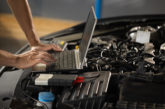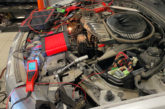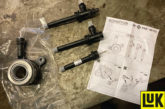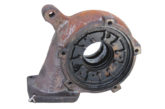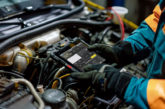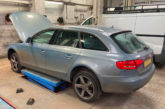
In this article, Carwood, a leading OE-approved turbo remanufacturer and technical service provider, gives some best practice advice on oil contamination, one of the most common causes of turbo failure.
Since 95% of turbo failures are caused by issues other than the turbo itself, it’s important to determine why it failed and fix it before a new one is fitted. If not, the replacement unit could fail too, costing you, and your customer, more time and money. Although accurate failure analysis can be a challenge for even the most experienced of technicians, by understanding the likely causes and symptoms, issues can be correctly pinpointed and remedial action taken.
What is oil contamination?
With tolerances measured in microns, and operating speeds of over 300,000 revs per minute, today’s modern turbochargers require a constant supply of clean, good quality oil to keep them running properly. Unfortunately, dirt, fuel, water, combustion residues and other contaminants can easily contaminate the oil, with even the smallest particles causing rapid wear to key components, and potentially serious damage to the turbocharger, and sometimes the engine.
What causes oil contamination?
Contaminated oil can be caused by a number of issues, the most likely being:
- A damaged, blocked or poor quality oil filter and/or filter bypass valve
- A build up of carbon in either the engine and/or oil feed and/or oil return pipes
- Degraded engine oil due to excessive temperatures and/or extended service intervals
- Internal engine leaks such as faulty cylinder head gaskets or injectors causing water, fuel or coolant to mix with and dilute the oil – diluted oil is as good as no oil
- Poor ongoing maintenance of the oil and lubrication systems
- Accidental introduction of dirt or debris into the system during servicing
- Metallic shavings or swarf deposits from engine wear, propagating debris throughout the entire system
- Other foreign matter such as dust and dirt entering the engine cylinders through the air intake system
What are the signs of oil contamination?
Like oil starvation, contaminated oilwill manifest itself in performance issues and component wear. Symptoms to look out for include:
- Check engine light illuminated – further diagnostics will be required to pinpoint the issue
- Loss in vehicle power – limp home mode
- Grooves/scoring to journal bearing, journal bearing diameters of shaft, wheel and thrust components
- Internal damage to the shaft and bearing from larger particles
- Wear to oil flinger/flinger grooves leading to potential oil leaks
- Excessive wear or damage to piston rings causing oil to enter the turbine side – this can result in increased oil consumption – remember piston rings are not 100% oil seals
- The turbine and/or compressor wheel coming into contact/rubbing against the housing bore, due to excessive play in the shaft from worn bushings/bearings
- Blocked internal oil galleries restricting oil flow
- Smell of fuel in the oil
- Particles in the oil
How to prevent oil contamination?
The risk of oil contamination can be mitigated by following best-practice service procedures, such as:
- Fit new, OE quality oil filters, at recommended service intervals, and when refitting a replacement turbo
- Flush and change the engine oil with the correct grade and quantity of oil, in line with vehicle manufacturer guidelines
- Fit new in-line micro filters and oil feed and return pipes, when installing a replacement turbo
- Check the entire oil supply system during every service, and clean or replace components as needed
- Only ever use OE quality fitting accessories – inferior quality gaskets and seals can easily break up and cause irreparable internal damage
- Take care when servicing the vehicle to avoid any accidental contamination – for example cap components and/or pipes where appropriate, keep the working area clean of dust, chemicals and airborne particles, use clean tools, and check you have them all when the job is complete
- Never use liquid sealant – it is liable to harden and break up when exposed to heat Check the engine for signs of wear, including swarf deposits
How to resolve oil contamination?
If an oil contamination related failure is confirmed, it’s important to address and fix the root cause, before replacing the turbocharger.
Remedial actions should include:
- Always conduct an oil system flush following the vehicle manufacturers guidelines, to ensure any trace of contaminated oil is removed
- Fill with the correct grade and quantity of oil as recommended by the vehicle manufacturer
- Fit new OE quality oil filters, gaskets, oil feed and return pipes, as per VM specification
- Thoroughly clean the entire oil supply and return system, especially in higher mileage vehicles – this may require the removal of the sump, oil pump and internal oil feed and return lines. Replace components where required
- When replacing the turbo, perform an oil pressure test to identify any issues in the oil supply and return system, and check that it’s supplying at full pressure
Whilst this may add additional expense to your customer’s bill, it is far more cost and time-effective than having to fit another turbo, and potentially an engine, when they return with the same issue soon after.
For a right-first-time service, and few customer comebacks, remember to always diagnose and fix what caused the original unit to fail. Or you risk the replacement turbo failing too.

